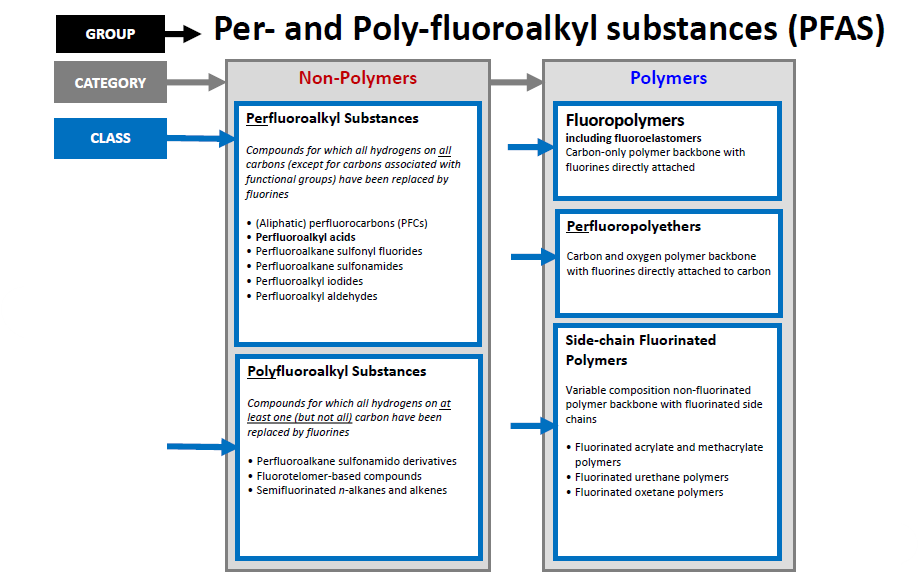Why Fluoropolymers are Considered PFAS

The use of “forever chemicals” in the European Union would be largely banned under a proposal issued by the European Chemicals Agency. At the same time, more US states continue to ban PFAS-containing products without a clear roadmap for the plastic industry.
You can also read Fluoropolymers Life Cycle and PFAS Contamination.
What are PFAS and how are they related to plastics?
The European Chemicals Agency and the Organization for Economic Cooperation and Development (OECD) defined PFAS as fluorinated substances that contain in their structure at least one fully fluorinated methyl or methylene carbon atom (without any H/Cl/Br/I atom attached to it).
That is, with a few noted exceptions, any chemical with at least a perfluorinated methyl group (–CF3) or a perfluorinated methylene group (–CF2).
As a result, PFAS can be distinct substances with very different properties. They can be polymers and non-polymers; solids, liquids, and gases; persistent and nonpersistent substances; highly reactive and inert substances; mobile and insoluble substances; and (eco) toxic and nontoxic chemicals.
Robert C Buck et al tried to do a comprehensive classification. This work promotes a sound, unified understanding among all players in the PFAS industry. Also, the scientific research related to it, and the bodies responsible for the regulation of chemicals.
Most Fluoropolymers are PFAS
Fluoropolymers are a family of high-performance plastics which contain strong carbon-fluorine (C-F) bonds. This unique atomic structure imparts desirable properties, such as chemical resistance, thermal stability, and electrical insulation.
Various industries, including aerospace, automotive, electronics, packaging, and medical use these unique plastics. Nevertheless, according to the definition, most fluoropolymers are PFAS. Polymer Processing aids, like PTFE, are also considered PFAS, so producers will be forced to look for other PFAS-free alternatives.
It is not clear if the regulation will make some exceptions to distinguish between Fluoropolymers, considered polymers of low concern for human health and the environment, and non-polymeric PFAS, which are the greatest risk based on toxicity profile and the potential for exposure.


The rapid development of the plastics industry over the past 50 years has run so much faster than the community uptake of the material use science and any needed regulatory regime. And this is the major problem which needs to be addressed in order to restrict the growth of false and misleading anti-plastic “gossip”, and to promote the real and the safe aspects of the technology, in a properly controlled and responsible manner..
Agreed, and most of the decision makers on these and other plastics related bans have no technical expertise on plastics technology!
Thanks for your papers.
I’m a SPE member working for samyang of Korea.
I’m not clear about PFAS regulations.
I’ve some questions from some relating regulations for PTFE and PVDF.
Especially, therer’e some difference between OECD and US EPA as I know.
1) US EPA: not under regulations
2) OECD: under regulations
Are those right?
Thanks a lot.
B.R
Ryu